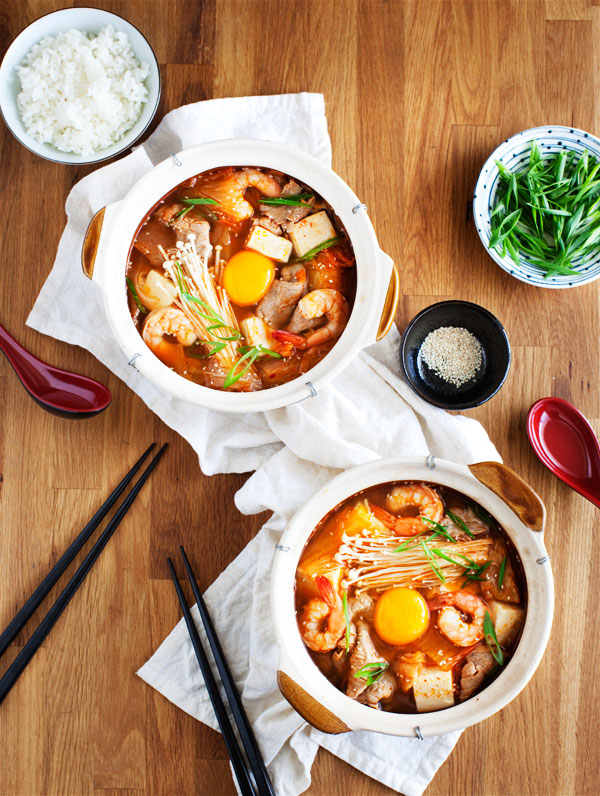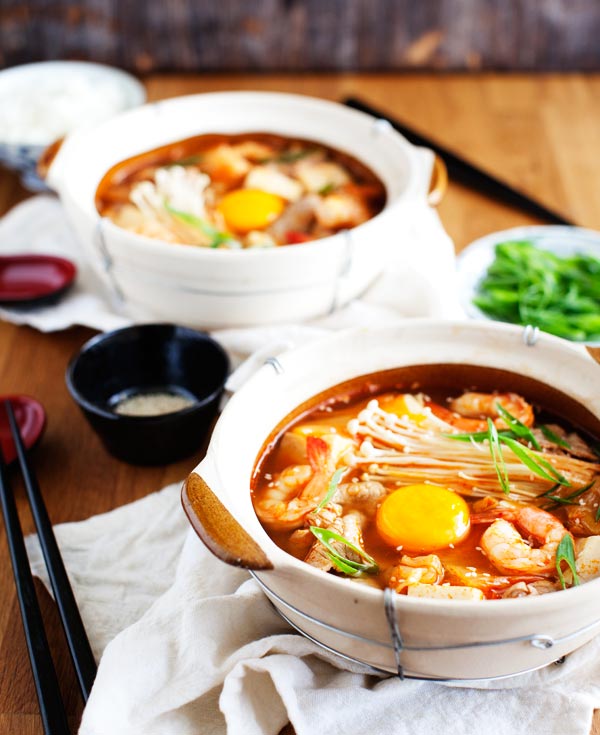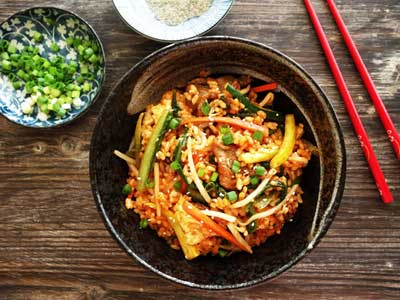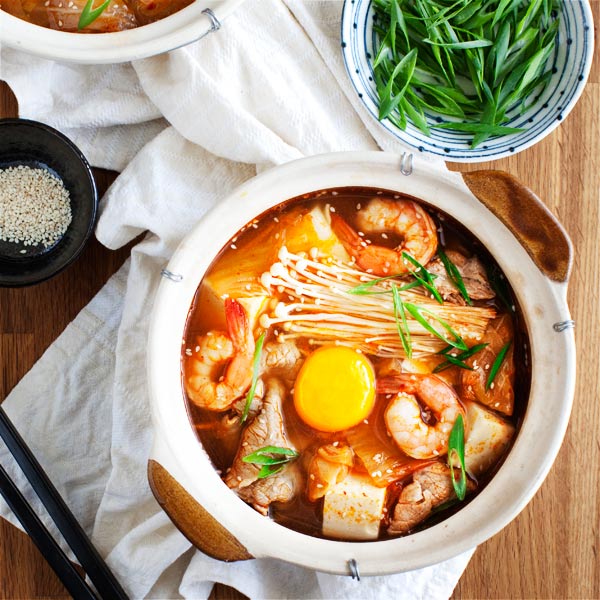I love Kimchi. If you open my refrigerator, you’ll see a jar of kimchi. Always.
Come back weeks or even months later and open that same refrigerator. You’ll probably want to unfriend me. Yeaaaaahhh… no. There’s no button you can click in real life. You’re stuck with me.
It stinks.
No, not me. Well, sometimes I stink too.
The refrigerator, guys. It smells like trash. Sour, couple day old trash.
Like we have a pet skunk that lives in the refrigerator having a skunk party with other skunk friends.
It’s the overly fermented kimchi. Yup.
Funny thing is, it kind of smells good yet smells so bad. It difficult to describe this confusing odor. Open the kimchi jar and it actually doesn’t smell too bad. The refrigerator, however, well… like I said. Smells like crap.
This is the problem with Asians. We are weird. We eat a lot in the beginning and then when there’s little of anything left… on the dining table… in the refrigerator… wherever it may be, we think we need to leave it for others to finish. That’s how we show respect. So the kimchi in our home is always left for the ‘others’ (no idea who the others are) to finish.
Yes, I’m generalizing, but I’m sure if you’re Asian, you’re probably the same way.
My sister in law used to lug whole suitcases of homemade kimchi from Korea. It would be kimchi heaven for weeks. Then, the inevitable happens and there will be over fermented kimchi left. Kimchi at this stage is super sour so she’d use them for soups or stir-fries.
Of course this doesn’t mean you should wait for it to become overly fermented to give yourself a reason to make this stew. ‘Normal state’ kimchi is perfect too. I should also mention, it’s not really stew, but you can’t very well call it soup either.
And then there’s gochujang – Korean chili pepper paste. My favorite thing on earth.. amongst many favorite things on earth. It’s used to help thicken and flavor the stew and of course add that spicy kick to your butt.
I call this my lazy day, quick yet comforting dish. I can’t emphasize enough how simple this can be whipped up. You literally just dump everything in the pot. Like hot pot really. Perfect for cold days or even warm summer days when you feel like sweating profusely so as to trick your body that you’ve done your work out.
Like spicy Korean food? Then you’re going to love Bibimbap. A signature Korean dish consisting of rice, assorted vegetables, meat & eggs mixed together with a spicy sauce. It’s beautifully simple & delicious.
Also, if you haven’t already done so, check out my last post Chicken Biryani. Burst of flavor with tender & moist chicken marinated in yogurt & a hearty mix of aromatic spices cooked with rice to perfection.
What do you do with your over fermented kimchi?
Korean Kimchi Stew with Beef, Shrimp & Tofu Serves 2
Broth:
1/2 cup dried anchovies (see notes)
4 cups water (or chicken/pork/beef broth)
1/2 lb cabbage, roughly chopped
1 small onion, cut into squares
2 green onions (white parts), sliced
Seasoning (see notes 4):
1/2 – 3/4 cup over fermented kimchi (and 2-3 tbs juice)
1 1/2 – 3 tsp gochujang – Korean chili pepper paste (depending on how spicy you like)
1 tsp salt or to taste
1/2 tsp sugar or to taste
1 14 oz extra soft tofu
8-10 medium shrimp
1/2 lb rib eye or pork butt or both (see notes 3), seasoned a little with salt
7 oz enoki
2 eggs
1/2 tsp garlic or shallot oil
Garnish:
2 green onions (green parts) sliced
1 red chili, sliced
White sesame seeds
Fried shallots (optional)
Fried anchovies (optional)
Dipping Sauce
2 tbs soy sauce
1/2 tsp rice vinegar
1 green onion, sliced
Pinch of sugar
2 garlic cloves, grated (optional)
Pinch of chili powder (optional)
directions:
1. In a saucepan, add the water. Put the anchovies in a spice bag. Add the onions, cabbage and anchovies in the water. Bring the water to boil over high heat. Once boiled, turn the heat to low and let simmer covered for 15 minutes.
2. Increase the heat to high, add the kimchi, kimchi juice, gochujang, salt and sugar. Stir to melt the sugar and gochujang. Taste and adjust seasoning. Add the tofu and bring liquid to boil. Once boiled, turn the heat to low and simmer covered for another 5-10 minutes until tofu has fully absorbed the flavor.
3. Increase the heat and bring the liquid to a rolling boil. Add the shrimp. Once shrimp is halfway cooked, add the beef. One beef is almost cooked, add the enoki and crack in the eggs. You can choose to beat the eggs into the stew or leave it whole until cooked to your liking. Once everything is cooked, serve immediately with steamed rice and dipping sauce.
Notes:
1. Anchovies: I believe the Koreans use the large size anchovies and the head and gut is usually removed. However, since I use the medium to small size anchovies and I use the ones I’ve fried, I don’t remove the head and the gut. At time, I’d even skip the spice bag altogether. It tastes fine like this for me. My mom would usually boil the anchovies, drain and remove the head and gut and then put them back into the broth to be consumed. So it’s really personal preference.
2. Broth: Cabbages and onions sweeten and give extra flavor to the broth. You can add radish or winter melon too.
3. Meat: Meat used is the thin slices typically found in most Korean markets labeled ‘shabu shabu’. It’s imperative to buy good quality meat. You can sear the meat before adding to the soup for extra depth of flavor if you wish to.
4. Seasoning will depend on how fermented the kimchi is. If the kimchi’s not too fermented, you can add more kimchi. If it’s too sour, you’ll need to balance it with sugar. Salt varies as different kimchi has different level of saltiness. Add a little and taste as you go.
5. Other add ons: Bean sprouts, shiitake mushrooms, lettuce, clam, squid or mussels. The sky’s the limit really.




